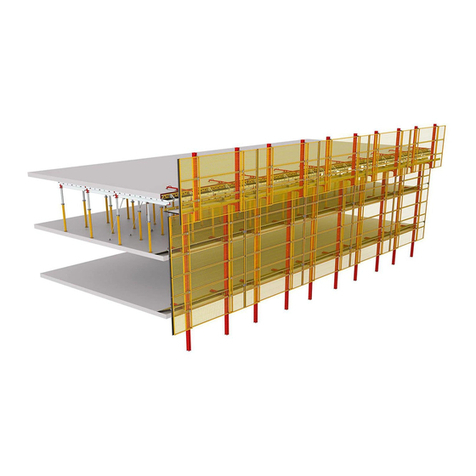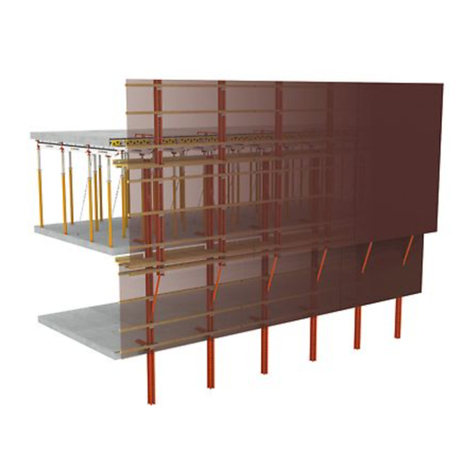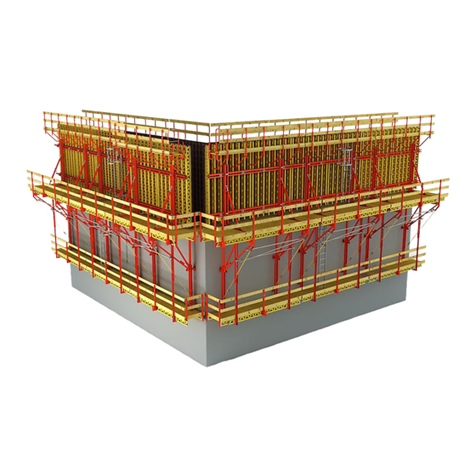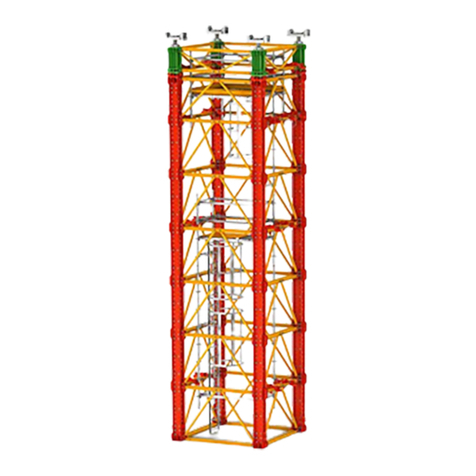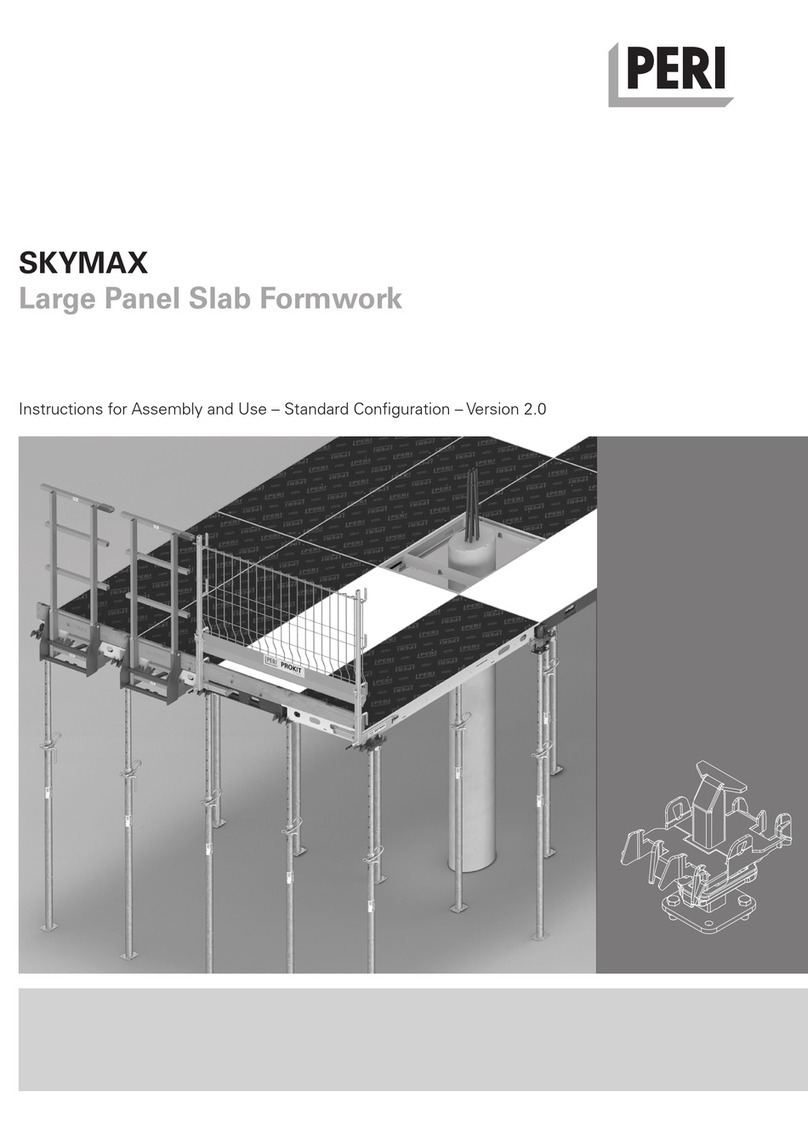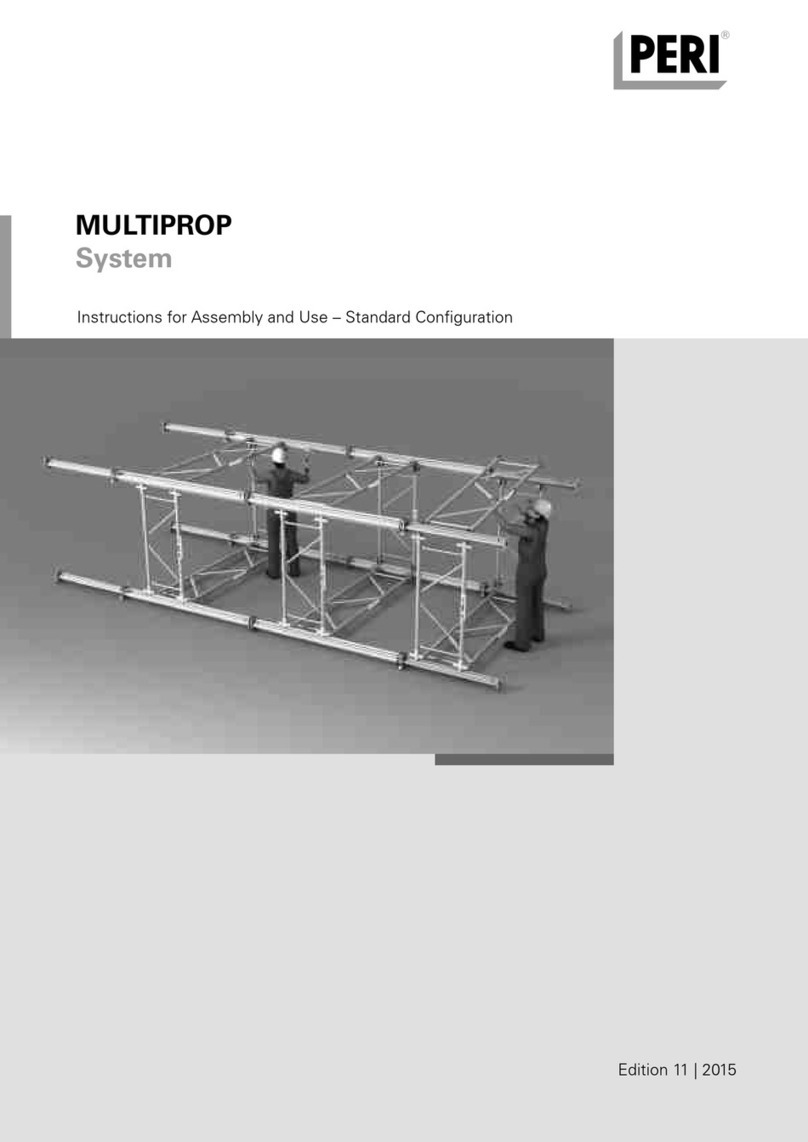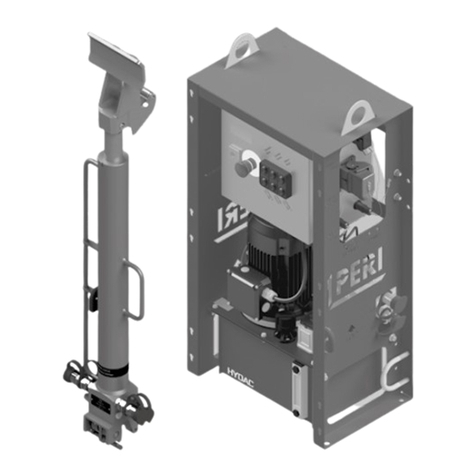
6
Safety instructions
Cross-system
General
The contractor must ensure that the
Instructions for Assembly and Use sup-
plied by PERI are available at all times
and understood by the site personnel.
These Instructions for Assembly and
Use can be used as the basis for creat-
ing a risk assessment. The risk assess-
ment is compiled by the contractor.
These Instructions for Assembly and
Use do not replace the risk assessment!
Always take into consideration and
comply with the safety instructions and
permissible loads.
For the application and inspection of
PERI products, the current safety
regulations and guidelines valid in the
respective countries must be observed.
Materials and working areas are to be
inspected on a regular basis, especially
before each use and assembly, for:
signs of damage,
stability and
functionality.
Damaged components must be
exchanged immediately on site and
may no longer be used.
Safety components are to be removed
only when they are no longer required.
Components provided by the contractor
must conform with the characteristics
required in these Instructions for
Assembly and Use as well as all valid
construction guidelines and standards.
Unless otherwise indicated, this applies
in particular to:
Timber components: Strength Class
C24 for Solid Wood according to
EN 338.
Scaffold tubes: galvanised steel tubes
with minimum dimensions of
Ø 48.3 x 3.2 mm according to
EN 12811-1:2003 4.2.1.2.
Scaffold tube couplings according to
EN 74.
Deviations from the standard configura-
tion are only permitted after a further
risk assessment has been carried out
by the contractor.
On the basis of this risk assessment,
appropriate measures for working and
operational safety as well as stability are
to be determined.
Corresponding proof of stability can be
provided by PERI on request if the risk
assessment and resulting measures to
be implemented are made available.
Before and after exceptional occurrences
that may have an adverse effect regard-
ing the safety of the formwork system,
the contractor must immediately
create another risk assessment, with
appropriate measures for ensuring
the stability of the formwork system
being carried out based on the
results,
arrange for an extraordinary inspec-
tion to be carried out by competent
person qualified to do so. The aim
of this inspection is to identify and
rectify any damage in good time in
order to guarantee the safe use of
the formwork system.
Exceptional occurrences can include:
accidents,
longer periods of non-use,
natural events, e.g. heavy rainfall,
icing, heavy snowfall, storms or
earthquakes.
Assembly, modification and
dismantling work
Assembly, modification or dismantling
of formwork systems may only be car-
ried out by qualified persons under the
supervision of a competent person. The
qualified persons must have received
appropriate training for the work to be
carried out with regard to specific risks
and dangers.
On the basis of the risk assessment
and Instructions for Assembly and Use,
the contractor must create installation
instructions in order to ensure safe
assembly, modification and dismantling
of the formwork system.
The contractor must ensure that the
personal protective equipment required
for the assembly, modification or
dismantling of the system, e.g.
safety helmet,
safety shoes,
safety gloves,
safety glasses,
is available and used as intended.
If personal protective equipment against
falling (PPE) is required or specified in
local regulations, the contractor must
determine appropriate attachment points
on the basis of the risk assessment.
The personal protective equipment
against falling to be used is determined
by the contractor.
The contractor must
provide safe working areas for site
personnel which are to be reached
through the provision of safe access
ways. Areas of risk must be cordoned
off and clearly marked.
ensure the stability during all stages
of construction, in particular during
assembly, modification and disman-
tling operations.
ensure and prove that all loads can
be safely transferred.
Utilisation
Every contractor who uses or allows
formwork systems or sections of the
formwork to be used, has the responsi-
bility for ensuring that the equipment is
in good condition.
If the formwork system is used succes-
sively or at the same time by several
contractors, the health and safety
coordinator must point out any possible
mutual hazards and all work must be
then coordinated.
TRIO Panel Formwork
Instructions for Assembly and Use – Standard Configuration
AuV TRIO EX.indb 6 11.10.17 09:44

